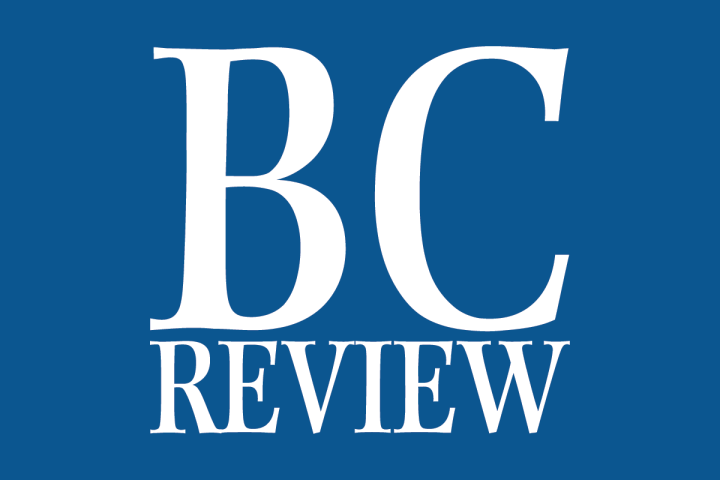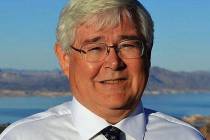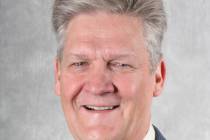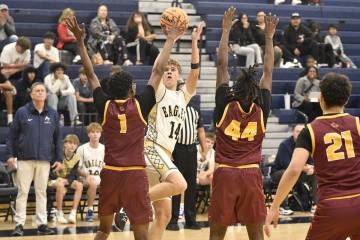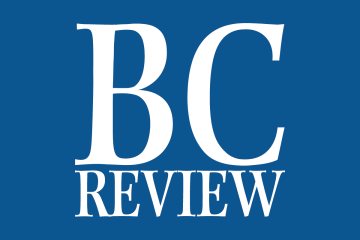First off, Merry Christmas to you all. Over the weekend I watched an interesting documentary on Netflix about the New Yorker magazine turning 100.
Opinion
Veterans nationwide, and statewide in Nevada from Virginia City to Boulder City, honestly receive benefits from the Dept. of Veterans Affairs (VA).
Some of Boulder City’s finest, but often most under-appreciated citizens, are the long-term care residents at Boulder City Hospital.
The holiday season is here! Radio stations are playing the classic songs, thousands turned out for the Electric Night Parade, stores are bustling with customers, and kids are creating their wish list for Santa.
You know that Progressive Insurance commercial that humorously depicts a “Parent-Life Coach” advising young homeowners on how to avoid turning into their parents? When the coach corrects homeowners to not chime in on strangers’ conversations, it made me realize, I’ve totally become my mother. (But I’m OK with it, because my mom was awesome.)
A new year. A new you. Making New Year’s resolutions to improve yourself or your life is a tradition that dates back thousands of years.
I want to wish all the residents of Boulder City a new year that brings better times and allows us to move beyond the challenges and struggles we have had in the past year and more. We are tired and frustrated from the pandemic that has caused hardship and, for many, personal loss.
There are only a few hours left in 2021 and I don’t know how the others passed so quickly. It seems the older I get, the faster days fly by.
A few years ago, many readers commented how much they enjoyed my column about holiday baking and requested that I make this an annual tradition. Though my holiday baking has since expanded into the entire month of December so that more family and friends can enjoy the fruits of my labor, the true spirit of the message remains. I promise to stay knee-deep in flour, sugar and spices, and wish all a sweet holiday season and new year.
We live in the greatest country in the entire world. It has many inequalities and a number of negative attributes, but these are an exception, not the norm.
This is a story about a tree and the spirit of Christmas generated by one local neighborhood.
Much has been written in the Boulder City Review opinion pieces recently about “scientific research” and factual data regarding in the COVID-19 pandemic and efforts to prevent and treat the disease. This includes (false) claims from other opinion authors that research has shown that masks are “ineffective at preventing the spread of COVID” (Savord, Oct. 27, and that vaccinated people transmit the virus to others “at a higher rate, and with more serious symptoms” than a person with natural antibodies (Ishihara, Nov. 24).
This holiday season I’m contemplating technology. I purchased Alexa devices because I was tired of yelling across the house at mealtimes. They also function as alarm clocks, fact checkers, personal meteorologists, multiroom speakers, audiobook narrators, escape room docents and, when we’re feeling lazy, a conduit for family scripture time. All from the convenience of a little device. It almost seems too much for one little dot, and the problem is that many times it is.
In addition to small-town charm, Boulder City’s spectacular quality-of-life amenities are among the main things that attract people to live here and visit us.
I enjoyed sitting outdoors while dining at various restaurants this fall as we experienced one of the most splendid Indian summers ever in Boulder City. On Sunday, Nov. 28, I was sitting with my wife, Fonda, enjoying another beautiful day when a couple arrived at an adjoining table. They both had gray hair so they were at least in their 50s or 60s.
Terry Sylvanie, 49, was arrested Dec. 19 and remained in custody at the Clark County Detention Center as of Tuesday, according to online jail records.
Last week, following the arrest of a shooting suspect, the city put out a press release regarding the incident, but the suspect’s name was not released at that time.
There’s no denying that Boulder City’s history is one of the most colorful and rich of any town or city in Nevada.
This year’s Harmony Handbells concert will be held this Saturday at the Boulder City Parks and Recreation complex.


